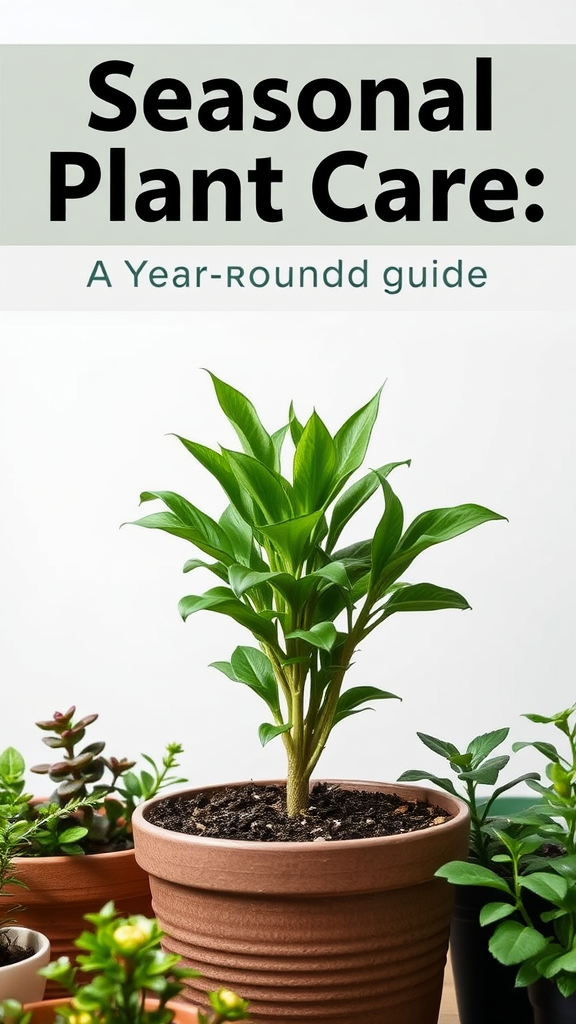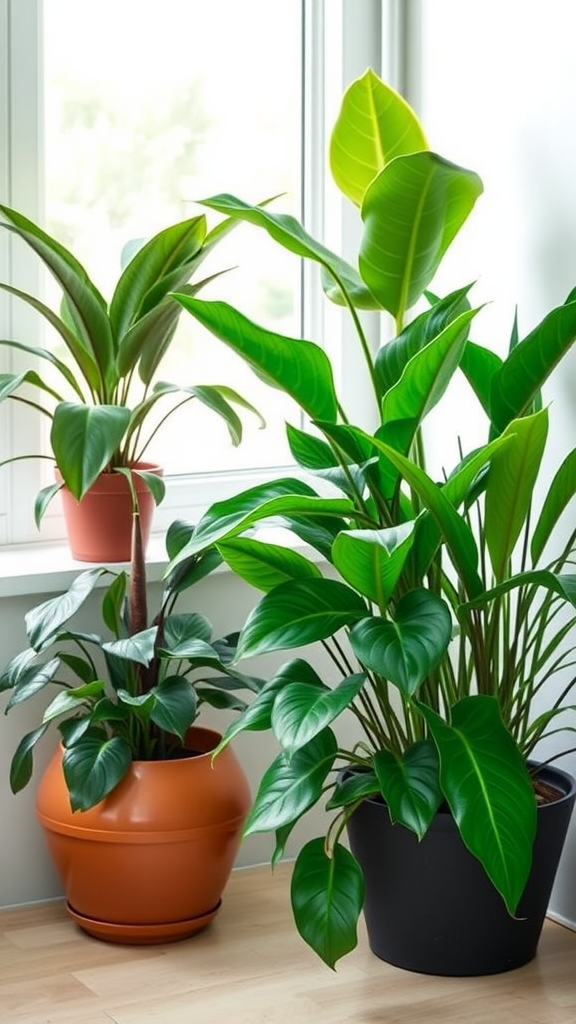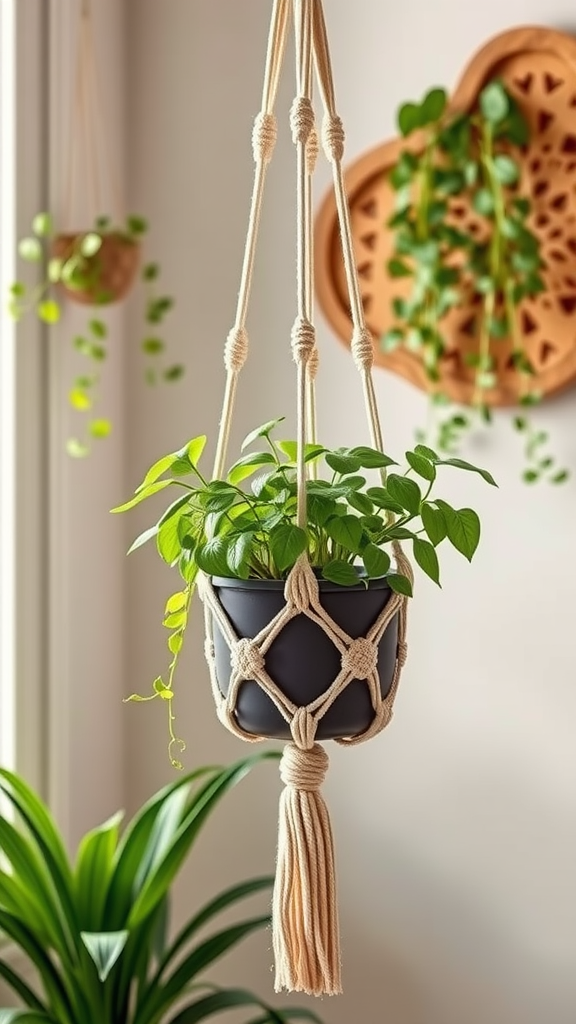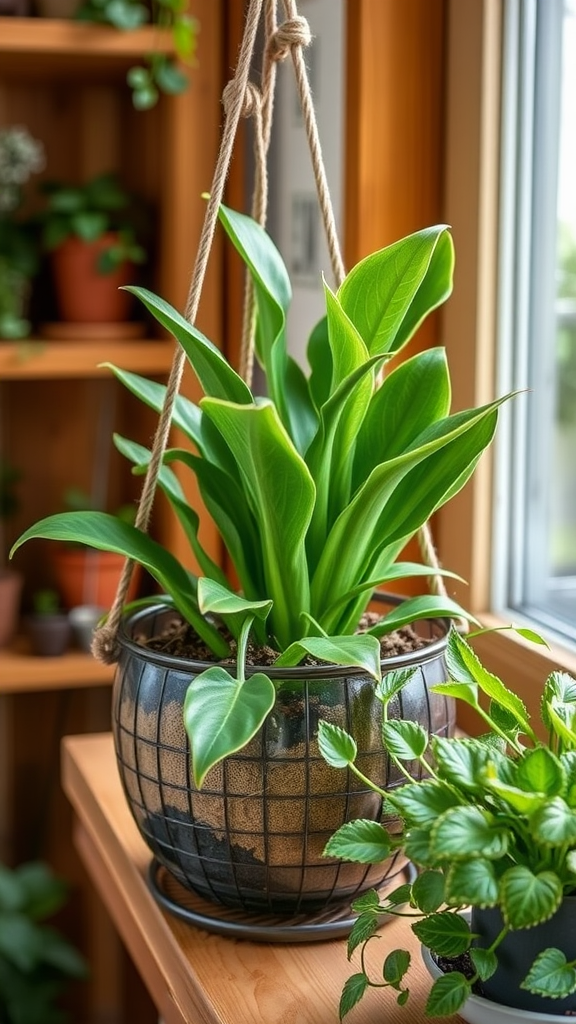Seasonal Plant Care: Essential Tasks for Each Season
Taking care of your plants through the changing seasons is vital for their health and growth. Each season brings unique environmental factors that can affect your plants, and adjusting your care routine can make all the difference. Here’s a guide to essential tasks you should consider for seasonal plant care.
Spring Care Tips
As the cold weather fades and temperatures begin to rise, spring is the perfect time to focus on new growth. Here are key tasks to take on during this vibrant season:
- Repotting: If your plants have outgrown their pots, this is an ideal time for repotting. Choose a pot that gives the roots room to breathe.
- Fertilizing: As plants begin to grow more vigorously, supplement their nutrition with a balanced fertilizer. This will encourage healthy growth.
- Watering: Ensure you’re watering regularly, but do so based on the specific needs of each plant. Test the soil moisture before adding water.
- Pruning: For flowering plants, now is a good time to prune. Cut away any dead or unhealthy branches to encourage better blooms.
Summer Care Tips
Summer brings warmth and often intense sunlight, which requires special attention to your plants. Follow these summer care strategies:
- Watering Wisely: Water early in the morning or late in the afternoon to prevent evaporation. Deep watering is more effective than quick, surface watering.
- Mulching: Apply a layer of mulch around your plants to help retain soil moisture and suppress weeds.
- Monitoring for Pests: Keep an eye out for common pest infestations. Use organic treatments or natural predators to control pest problems.
- Shade Management: If needed, provide shade for more delicate plants to prevent sunburn.
Autumn Care Tips
As temperatures cool down, preparing your plants for winter becomes crucial. Implement these autumn care techniques:
- Clean-Up: Remove any dead leaves and debris around your plants to prevent disease and pests.
- Fertilize Again: A fall feeding can strengthen your plants before they enter dormancy. Look for fertilizers that are higher in phosphorus.
- Protection: If you live in a region with harsh winters, consider wrapping tender plants with frost cloth or moving them indoors.
- Pruning: Late autumn is the time to prune trees and shrubs to control their shape and health for the coming year.
Winter Care Tips
Winter can be a challenging time for plants. Here’s how to care for them during the colder months:
- Indoor Plants: Ensure indoor plants receive proper light by rotating them to face the sun and cleaning their leaves.
- Humidity Control: Use a humidifier or pebble trays to maintain humidity, especially for tropical houseplants struggling in dry winter air.
- Watering Less: Most plants need less water in winter. Allow the top inch of soil to dry out before watering again.
- Monitor Temperature: Keep plants away from cold drafts and heating vents. A steady temperature helps to keep them safe from stress.
By adjusting your plant care routine with the seasons, you can promote healthy growth and beautiful blooms all year round. Remember, every plant is unique, so always consider their specific needs. Happy gardening!
Common Mistakes in Plant Care Throughout the Year
Caring for plants can be a fulfilling hobby, but many people unintentionally make mistakes that hinder their plants’ growth and health. Understanding these common missteps can significantly improve your gardening experience and ensure your plants thrive year-round.
Overwatering Your Plants
One of the most widespread mistakes in plant care is overwatering. It’s easy to assume that more water means healthier plants. However, overwatering can lead to root rot and attract pests. Ensuring that your plants are in well-draining soil and that pots have drainage holes is crucial. To avoid overwatering, check the moisture level of the soil before adding more water. Stick your finger an inch deep into the soil; if it feels damp, hold off on watering.
Ignoring Seasonal Changes
Ignoring the seasons is another frequent error. Each season requires different care and adjustments. Here’s a breakdown:
- Spring: Fertilizing plants wakes them up from dormancy. Be careful not to over-fertilize, which can harm young growth.
- Summer: This is the time for extra watering, but always check for signs of drought stress or over-saturation.
- Fall: Reduce watering as plants prepare for winter. It’s also the best time for repotting or dividing perennials.
- Winter: Keep watering to a minimum, especially for indoor plants, as they enter a dormant phase.
Choosing the Wrong Plants for Your Environment
Selecting plants that aren’t suited to your environment can lead to disappointment. Whether it’s too much sunlight or inadequate humidity, choose plants that fit your home or garden’s conditions. For instance, if you live in a dry area, opting for drought-resistant plants is wise. On the other hand, if you have high humidity, tropical plants will flourish.
Failure to Prune and Deadhead
Not pruning your plants regularly can result in overgrowth and reduced flowering. Pruning encourages new growth and helps maintain the desired shape. Deadheading, or removing spent flowers, promotes further blooming and keeps plants looking neat. Regular grooming serves a dual purpose: enhancing aesthetics and promoting health.
Neglecting Pest Control
Pests can be a plant lover’s nightmare. Ignoring early signs of infestation can lead to severe issues. Check your plants regularly for signs of pests, such as discoloration, holes, or webs. If pests are detected, act quickly! Consider using natural remedies like neem oil or insecticidal soap, which are effective without being overly harsh.
Using the Wrong Fertilizer
Many gardeners misapply fertilizers or use the wrong type altogether. Each type of plant has distinct nutritional requirements. For example, succulents require a diluted fertilizer, while flowering plants often need a balanced mix. Always read labels carefully, and consider conducting a soil test to understand what nutrients your garden needs.
Inconsistent Light Exposure
Plants are avid sun-seekers, and each type has a light preference. Some plants thrive in low light, while others bask under full sun. Placing plants in unsuitable light conditions can lead to poor growth. Rotate your indoor plants regularly to ensure even exposure to light, and adjust their locations seasonally based on the sunlight they receive.
Misunderstanding Temperature Needs
Temperature is vital for plant health. Many gardeners don’t realize how temperature fluctuations can stress plants. Be aware of the specific temperature needs of your plants, particularly when it comes to moving them indoors or outdoors. Sudden changes can shock your plants and stunt their growth.
Failing to Repot When Necessary
As your plants grow, they may outgrow their pots, which can limit their access to nutrients and water. Not repotting can cause stunted growth. Signs it’s time to repot include roots coming out of the drainage holes or visible soil depletion. Choose pots that are one size larger to give your plants room to grow.
By being aware of these common mistakes, you can take steps to provide the best care for your plants throughout the year. Each season brings its unique challenges, but with knowledge and intent, you can cultivate a thriving garden full of life and color.
Conclusion
Taking care of your plants is a rewarding journey throughout the year. By understanding the essential tasks for each season, you can ensure your plants thrive no matter the weather. In spring, you can focus on fertilization and planting, while summer may require extra attention to watering and pest control. As the leaves start to turn in autumn, it’s time for preparation for colder months and perhaps some pruning. winter calls for special care, like adjusting watering schedules and providing adequate light.
However, it’s equally important to be aware of common mistakes in plant care. Many people overwater their plants or neglect them during busy seasons. Using the wrong soil type or failing to adjust care routines based on seasonal changes can lead to unhealthy plants. By recognizing these pitfalls, you can avoid costly errors that can hinder your plants’ growth.
Remember, each season presents unique opportunities and challenges for your green friends. Embracing the specific needs of your plants during these times sets the foundation for a flourishing home garden. By keeping these seasonal plant care tips and common mistakes in mind, you’re well on your way to creating a vibrant, healthy environment for your plants to thrive. Cultivating a deep understanding of seasonal care not only fosters beautiful plants but also enhances your relationship with nature, making every plant care task a gratifying experience. Happy gardening!





